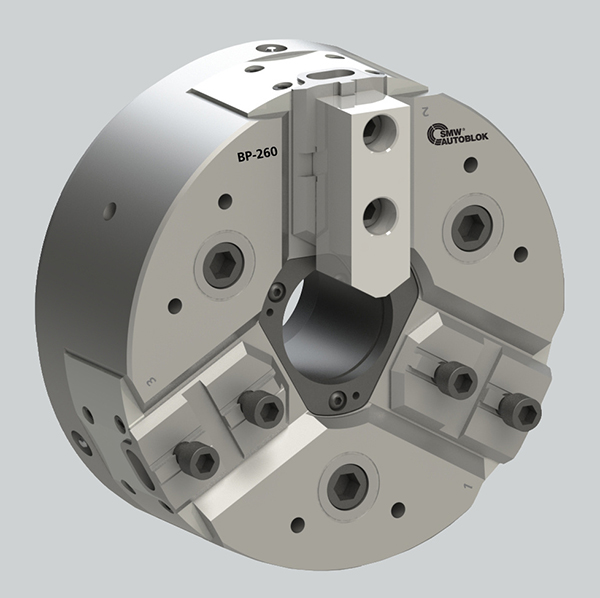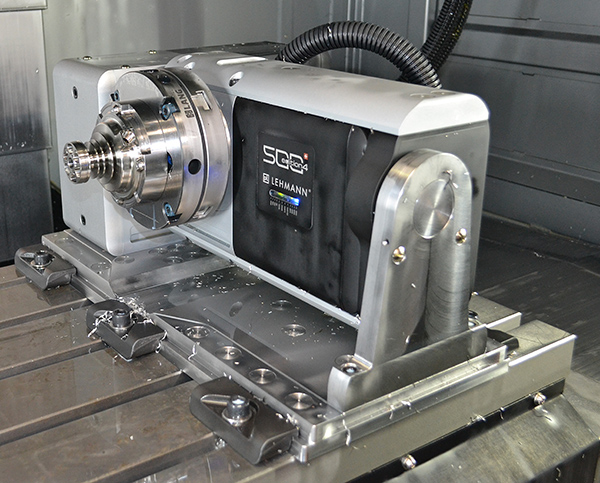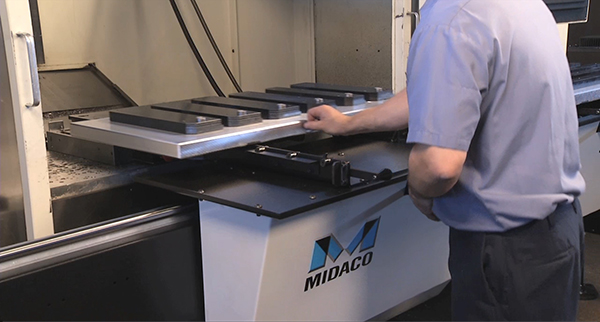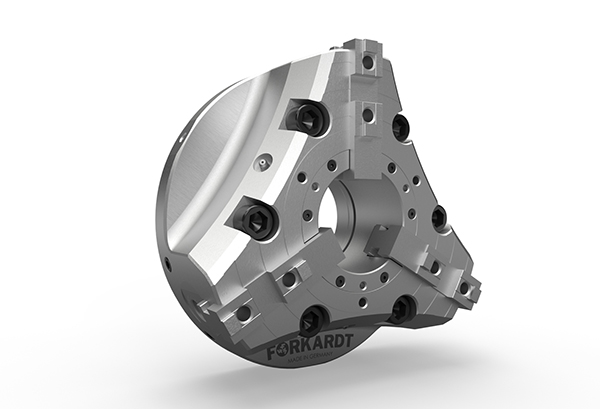
SMW Autoblok is introducing its BP chuck, which the company says is the only standard fully sealed power chuck on the market with a large through hole for maximum lifespan, throughput and durability. Suitable for lathe applications, BP’s large through-hole provides flexibility for virtually any application that requires the use of a standard chuck, including OD and ID clamping, bar-stock clamping and shaft clamping. In addition, it is easy to convert the BP to a collet chuck using collet pads for small diameter parts.
A true workhorse, BP maintains high efficiency even in the harsh environments of dry machining, abrasive powders, high-pressure or corrosive coolants, and more. Constant grease lubrication provides clamping force consistency and reduced wear, reducing downtime and loss of productivity. With BP, daily maintenance intervals become a thing of the past as maintenance checks are only required every 2000 hours.
Being fully Proofline sealed from outside contaminants allows BP to maintain a consistent grip force for more repeatability at high speed in comparison with non-sealed chucks, which can lose more than 50% grip force if not maintained properly. Other advantages include a case-hardened body and internal parts for high resistance and longer life.
Available in 210, 260 and 320 mm sizes, BP series chucks accept all industry top jaws. SMW Autoblok’s BP-D utilises master jaws with inch serration, while the BP-M operates with metric serration (suitable for Japanese jaws). The American standard, tongue and groove master jaws are available on the BP-C.
For further information
www.smwautoblok.com























